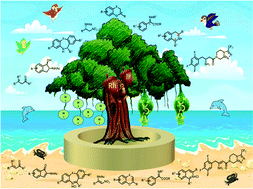C1-Symmetric diphosphorus ligands in metal-catalyzed asymmetric hydrogenation to prepare chiral compounds
Abstract
Asymmetric hydrogenation has remained an important and challenging research area in industry as well as academia due to its high atom economy and ability to induce chirality. Among several types of ligands, chiral bidentate phosphine ligands have played a pivotal role in developing asymmetric hydrogenation. Although C2-symmetric chiral bidentate phosphine ligands have dominated the field, it has been found that several C1-symmetric ligands are equally effective and, in many cases, have outperformed their C2-symmetric counterparts. This review evaluates the possibility of the use of C1-symmetric diphosphorus ligands in asymmetric hydrogenation to produce chiral compounds. The recent strategies and advances in the application of C1-symmetric diphosphorus ligands in the metal-catalyzed asymmetric hydrogenation of a variety of C![[double bond, length as m-dash]](https://www.rsc.org/images/entities/char_e001.gif) C bonds have been summarized. The potential of diphosphorus ligands in asymmetric hydrogenation to produce pharmaceutical intermediates, bioactive molecules, drug molecules, agrochemicals, and fragrances is discussed. Although asymmetric hydrogenation appears to be a problem that has been resolved, a deep dive into the recent literature reveals that there are several challenges that are yet to be addressed. The current asymmetric hydrogenation methods mostly employ precious metals, which are depleting at a fast pace. Therefore, scientific interventions to perform asymmetric hydrogenation using base metals or earth-abundant metals that can compete with established precious metals hold significant potential.
C bonds have been summarized. The potential of diphosphorus ligands in asymmetric hydrogenation to produce pharmaceutical intermediates, bioactive molecules, drug molecules, agrochemicals, and fragrances is discussed. Although asymmetric hydrogenation appears to be a problem that has been resolved, a deep dive into the recent literature reveals that there are several challenges that are yet to be addressed. The current asymmetric hydrogenation methods mostly employ precious metals, which are depleting at a fast pace. Therefore, scientific interventions to perform asymmetric hydrogenation using base metals or earth-abundant metals that can compete with established precious metals hold significant potential.

- This article is part of the themed collection: Synthetic methodology in OBC


 Please wait while we load your content...
Please wait while we load your content...